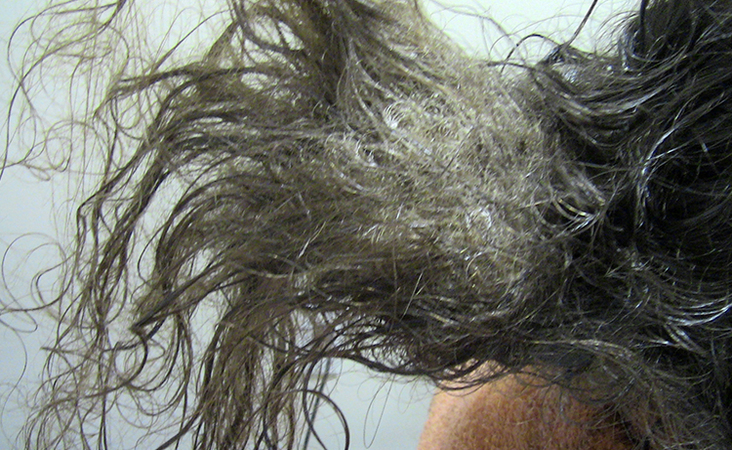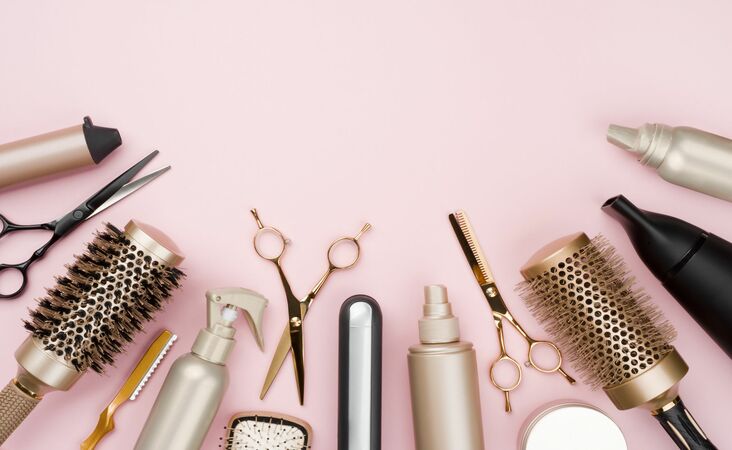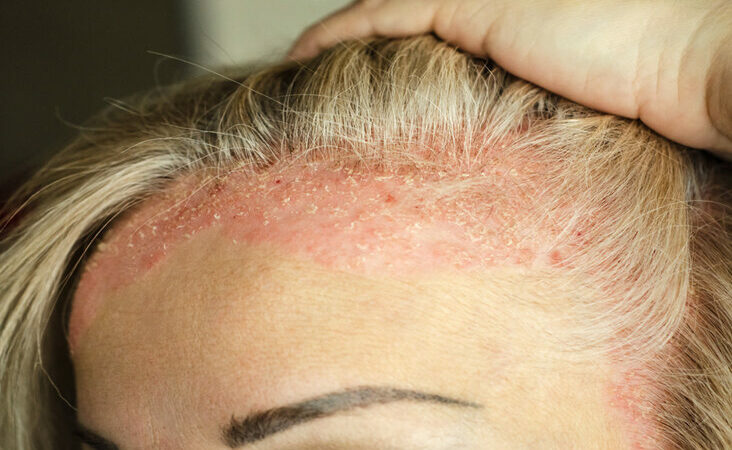Plica Polonica: Causes, Symptoms, Treatment, and More
- Written by Victor Lordhair
- Oct 3, 2022
- |
- 12 min read
 Listen to the full text
Listen to the full textHaving to deal with knotted locks every day is one of the most frustrating things for women. But if hair gets entangled into a sticky bunch and becomes unmanageable, consider it a sign of Plica Polonica.
A lot of men and women have no clue about this condition, its initial signs, causes, and medical connections. If you are one of them, we recommend reading this blog to the end!
Lordhair - a leading hair toupee supplier - is here to talk about Plica Polonica, its clinical features, symptoms, causes, and treatments.
Don’t have enough time to read the complete blog? Fret not. We have prepared a FAQ version for you!
What is Plica Polonica?
Plica Polonica is a rare hair condition in which shafts become intertwined and matted to form a sticky mass.
What are the symptoms of Plica Polonica?
Here are the signs and symptoms of Plica Polonica in adults:
- Matted and malodorous mass of hair
- Foul smell
- Cemented hair with the formation of pus, blood, crust, and dirt
- Hair loss on unaffected areas of the scalp
- Nits and lice infestation
- Inflammation
What are the causes of Plica Polonica?
The following are the causes of Plica Polonica:
- Harsh shampoo
- Poor scalp hygiene
- Lice infestation
- Irritant contact dermatitis
- Electrostatic forces
- High-temperature exposure (heat-styling tools)
What are treatments for Plica Polonica?
Here are treatments for Plica Polonica:
- Thorough hair washing with medical shampoo
- Use detangling spray
- Apply permethrin lotion
- Steer clear of heat-based styling tools
- Wear hair replacement systems
Now that we are done with the TL;DR version, let’s dig deeper into Plica Polonica hair loss!
What Is Plica Polonica?
Plica Polonica is a rare hair condition in which shafts become intertwined and matted to form a sticky mass. Also called plica neuropathica, it often starts with prolonged nervous-rheumatic ailment and grows into the formation of uncombed and filthy hair plaits on the scalp and other hairy parts of the human body.
The hair plaits get very stiff over time as the moist mass gets cemented together with dirt and exudates. Dermatologists say that Plica Polonica usually affects adults and is related to damaged cuticle cells that expose the Cortex. Originating in Poland back in the 19th century, Plica Polonica can result in heavy hair fall if not taken care of on time.

What Are the Symptoms of Plica Polonica?
Men and women diagnosed with Plica Polonica hair disorder will notice that the strands on the whole or a certain area of the scalp have transformed into a matted and malodorous mass of hair that is difficult to untangle. And that’s not it! Some patients may even experience:
- Foul smell from hair mass
- Cemented hair with the formation of pus, blood, crust, and dirt
- Hair loss on unaffected areas of the scalp
- Nits and lice infestation
- Inflammation
Note: Visit a doctor immediately in case you notice any of the aforementioned signs or symptoms.
What Are the Causes of Plica Polonica?
Although the exact cause of Plica Polonica has not been discovered yet, some dermatologists believe that this hair condition is triggered by a composition of different physical, chemical, and behavioral factors.
Here are common reasons for Plica Polonica in men and women:
#1 Use of harsh shampoo
Yes, you read it right. The harsh shampoo sitting on your bathroom’s shelves could become a reason behind Plica Polonica. Rich in ingredients like sulfate, paraben, SLS, alcohol, and mineral oil, using harsh shampoos and soap bars for a long time can strip the hair of its natural oils and cause scalp build-up. It makes hair dry and tangle and could result in Plica Polonica.
10 harmful chemicals in shampoos that cause hair loss
#2 Poor scalp hygiene
Some men and women take their scalp health for granted and don’t give hair much consideration in everyday hygiene. They don't wash their hair enough. This allows oil and dirt to build up on the scalp and seal pores. It affects the scalp's health and could pave the way for Plica Polonica.
Factors like stress, pollution, poor nutrition, and wearing the same hat or cap again and again also affect scalp hygiene.
#3 Lice infestation
For those who don’t know, a lice infestation is a parasitic skin infestation caused by tiny wingless insects called pediculus humanus capitis (head louse). They feed on the blood of the human scalp. When left unchecked, lice damage the scalp and affect the health of hair strands. Usually, the scalp gets sores and lesions from scratching triggered by lice bites. In extreme cases, hair may become dry and matted, leading to Plica Polonica.
#4 Irritant contact dermatitis
Another major reason for plica neuropathica in men and women. Irritant contact dermatitis is a non-allergic skin reaction that occurs when an irritant damages the outer protective layer of the scalp’s skin. It can be aggravated by direct contact with a substance such as solvents, bleach, detergents, soap, hair products, plants, fertilizers, and pesticides.
Irritant contact dermatitis makes the hair strands dry and brittle, and the scalp red, bumpy, and scaly. It causes tangling which later results in Plica Polonica.

#5 Electrostatic forces
There might be a case where hair shafts become di-electrically charged. According to dermatologists, if one wears a hat or cap, the negative electrons may consort with them and make hair strands positively charged. And when the strands repel each other, they may invoke a negative charge. Different charges may give rise to matting and Plica Polonica.
#6 High-temperature exposure
Do you know that using a hair dryer, straightener, or any other heat based styling appliance can lead to Plica Polonica? The heat coming out of these tools vaporize residual moisture within the hair cuticle and cortex. It could lead to destructive bubble hair and trigger this hair problem in men and women.
What Are Treatments for Plica Polonica?
The following treatments will assist people in dealing with hair issues caused by Plica Polonica:
#1 Thorough washing with medical shampoo
Unlike ordinary shampoos, medicated shampoo comprises ingredients that can check the growth of Plica Polonica. Just like one applies antibiotic cream to a wound for keeping it moist and reducing the risk of infection, applying it to the scalp will reduce inflammation and calm itchiness. One can also use detangling shampoo to deal with the moist stiff mass of hair and prevent future hair knots and tangles.
#2 Use a detangling spray
Those who don’t feel like picking a new shampoo or a medicated one can buy a detangling spray. It contains ingredients like shea butter that help in reducing the tension between the hair strands caused by Plica Polonica and make detangling a smooth process. Detangling spray can be applied on both dry and damp hair and requires no rinsing.
6 medical conditions that cause hair loss and thinning
#3 Apply permethrin lotion
Widely recommended for lice infestation (one of the biggest reasons behind Plica Polonica), permethrin lotion is an over-the-counter 1% strength solution that works by paralyzing and killing lice and their eggs among adults. In order to apply permethrin lotion on their scalp, men and women should wash their hair first. Apply the solution and leave it for 10 minutes. Rinse and comb out nits and eggs afterward.
#4 Steer clear of heat-styling tools
Like we said earlier, the heat coming out of styling tools is one of the biggest enemies when it comes to damaging hair strands. Using them too much can leave lengths of dull, dry, broken, sticky hair and increase the risk of Plica Polonica. Avoid using heat tools to minimize hair damage. Don’t want to completely give up on heat styling? Men and women can try an updo on alternating days to cut down on its need.

#5 Try hair replacement systems
The treatments mentioned above may not do wonders for everyone. To them, Lordhair suggests buying toupee hair replacement systems. Also called modern-day hair units, they provide coverage for the areas that are affected by Plica Polonica.
Now unlike over-the-counter medications such as permethrin lotion, hairpieces for men and wigs for women don’t have any side effects. Comfortable, breathable, and durable, they look ultra-realistic and provide a natural appearance of hair growing directly from the scalp.
Check out how amazing Kelly looks after trying a Lordhair hair replacement system:
Plica Polonica: Final Words
Above are treatments to deal with hair problems caused by Plica Polonica. We know dealing with this hair condition is challenging, stressful, and requires a lot of attention. But these treatments will help you get rid of the matted and moist stiff mass of strands that are difficult to untangle.
Men and women can either cut down their matted hair or switch to hair replacement systems if the problem continues and they see no signs of recovery. Lordhair design and supply the world’s best range of stock and custom hair units to more than 100 countries. Our non-surgical hair recovery products are made of high-quality materials and come with a 30-day money-back warranty.
Got any queries about our hair replacement systems? Send them to support@lordhair.com and have them answered by our hair experts.
Note: We highly recommend consulting a doctor if you see multiple signs of Plica Polonica. Don’t start a treatment solely based on information on the internet.
Also read:
- Everything about scalp psoriasis hair loss
- A comprehensive guide on vitamin B12 hair loss
- Discover partial hairpieces for receding hairlines
- Shop waterproof wigs at deep discounts!
- Volume hair toppers to look your best
Discover our newest product pages:
- Discover the best volume wigs for men and women
- Discover human hairpieces at great discounts
- Best discounts on partial hairpieces
- Swim without fear! Discover waterproof wigs for men


